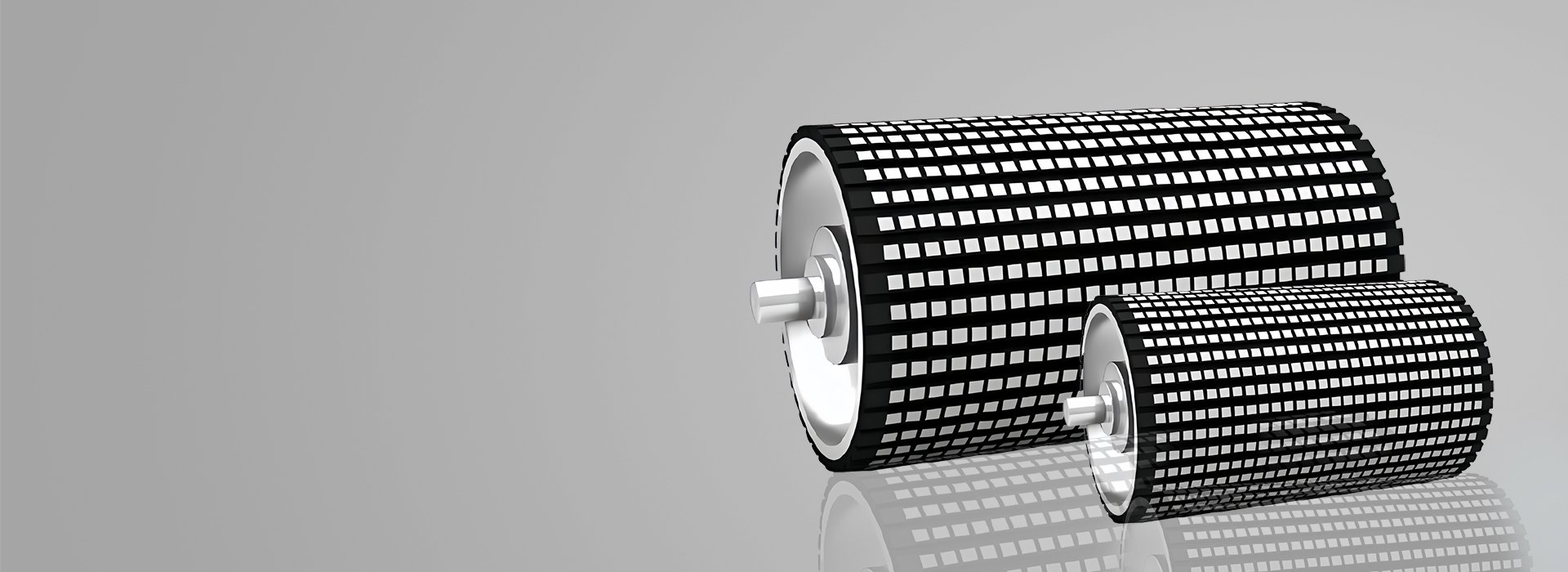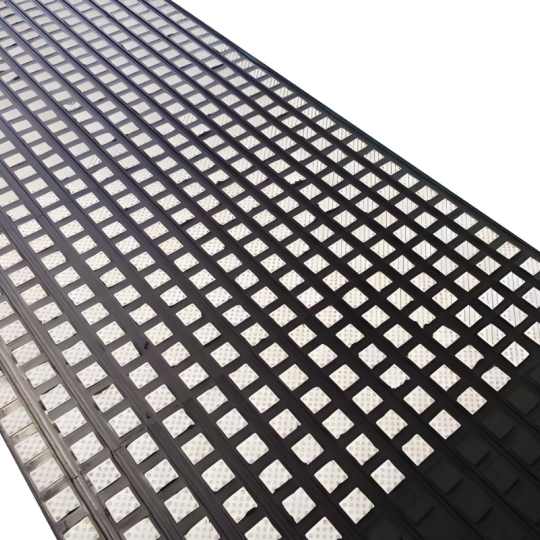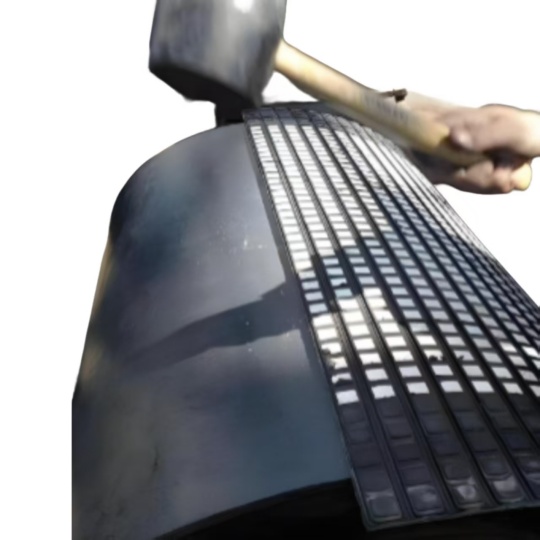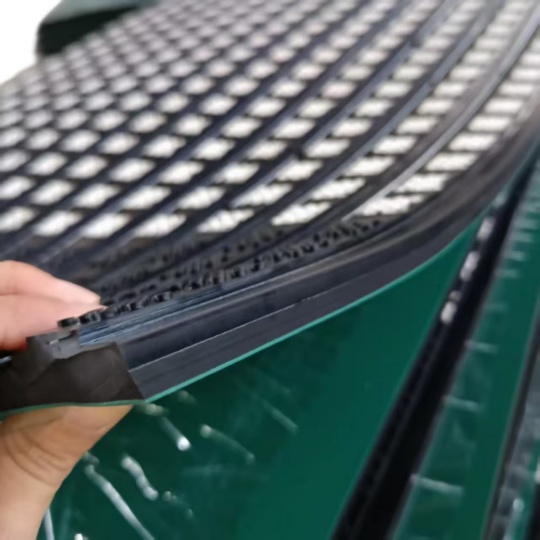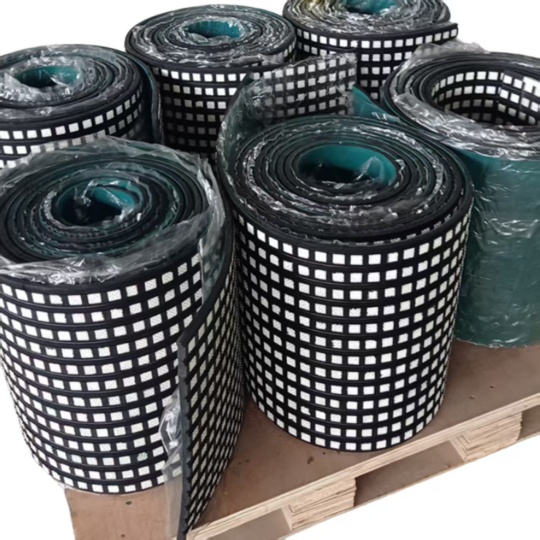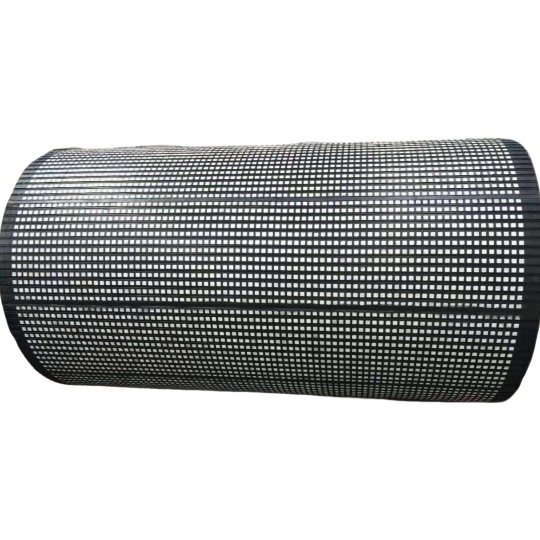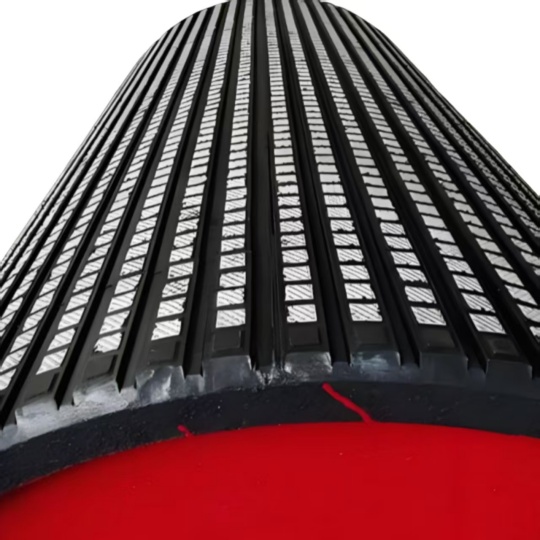AOBO Ceramic Pulley Lagging Performance
- Provides standard and flame-retardant ceramic lagging
- CN layer can be directly bonded without grinding
- Strong bonding to avoid debonding
- Increases surface friction coefficient to effectively prevent belt slippage
- Uses wear-resistant ceramic blocks, which have the best wear resistance and extremely long service life
- Suitable for belt conveyor roller lagging in harsh environments
Revestimiento cerámico para poleas
El revestimiento cerámico para poleas AOBO es uno de los tipos de revestimiento más utilizados en poleas transportadoras. Es esencial para mejorar el rendimiento de las bandas transportadoras.
Debido a que el deslizamiento y el desgaste excesivo pueden hacer que el revestimiento de caucho convencional sea ineficaz, las baldosas cerámicas de alúmina ayudan a sujetar firmemente la banda transportadora en condiciones de humedad, barro o similares, debido a la alta fricción. Además, gracias a la estructura especial de la superficie cerámica, el revestimiento para poleas de AOBO mantiene un buen rendimiento antideslizante en condiciones de humedad, tiene un buen drenaje y evacuación de lodo, y una gran capacidad de autolimpieza. Se utiliza a menudo en condiciones difíciles donde se transportan materiales abrasivos, ya que la cerámica es más resistente y duradera que el revestimiento de caucho. Es indispensable en la ingeniería de proyectos.
Para el revestimiento de poleas, AOBO New Material le garantiza la mejor experiencia. Elija nuestros productos sin dudarlo. La calidad y el servicio de AOBO son de primera categoría. Atenderemos sus necesidades con paciencia y le brindaremos un trato de máxima honestidad.
2 Types Popular Ceramic Pulley Lagging Specifications
Based on AOBO’s 20 years of industry experience, we suggest these 2 types of ceramic pulley lagging, which are hot-selling grades and specifications in the market, to provide you with professional selection reference.
That is Standard Ceramic Pulley Lagging and FARS Ceramic Pulley Lagging, Difference from Tensile Strength, Hardness, Elongation, Abrasion…
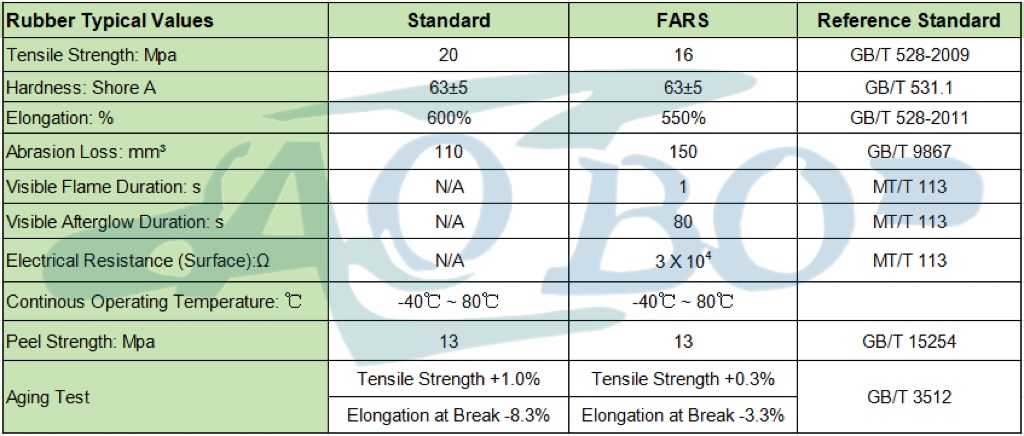
Top Surface: Ceramic typical values, Aluminium Oxide: 95%
Middle: Rubber Material
Bottom: CN-Layer
95% high-purity alumina ceramic blocks have excellent performance: density ≥3.7g/cm³, hardness 3 times that of steel, high compressive strength, resistance to extremely high temperatures, excellent wear resistance, and excellent electrical insulation and acid and alkali resistance. It is an ideal wear-resistant solution for mining machinery, high-temperature equipment and electronic components.

Ceramic Pulley Lagging Available Size
AOBO provides comprehensive rubber pulley lagging size and customization services for size, covering the hot-selling sizes, and available sizes for your reference.
AOBO provides a scientifically arranged ceramic rubber coating design solution, with ceramic sheet spacing accurate to ±0.5mm, maximizing grip and wear resistance!
▸ Ceramic sheet size: commonly 20×20×5mm
▸ Rubber substrate thickness: commonly popular 15mm
Equipped with edge anti-collapse treatment, it is perfectly suitable for extreme working conditions such as mines and steel mills.
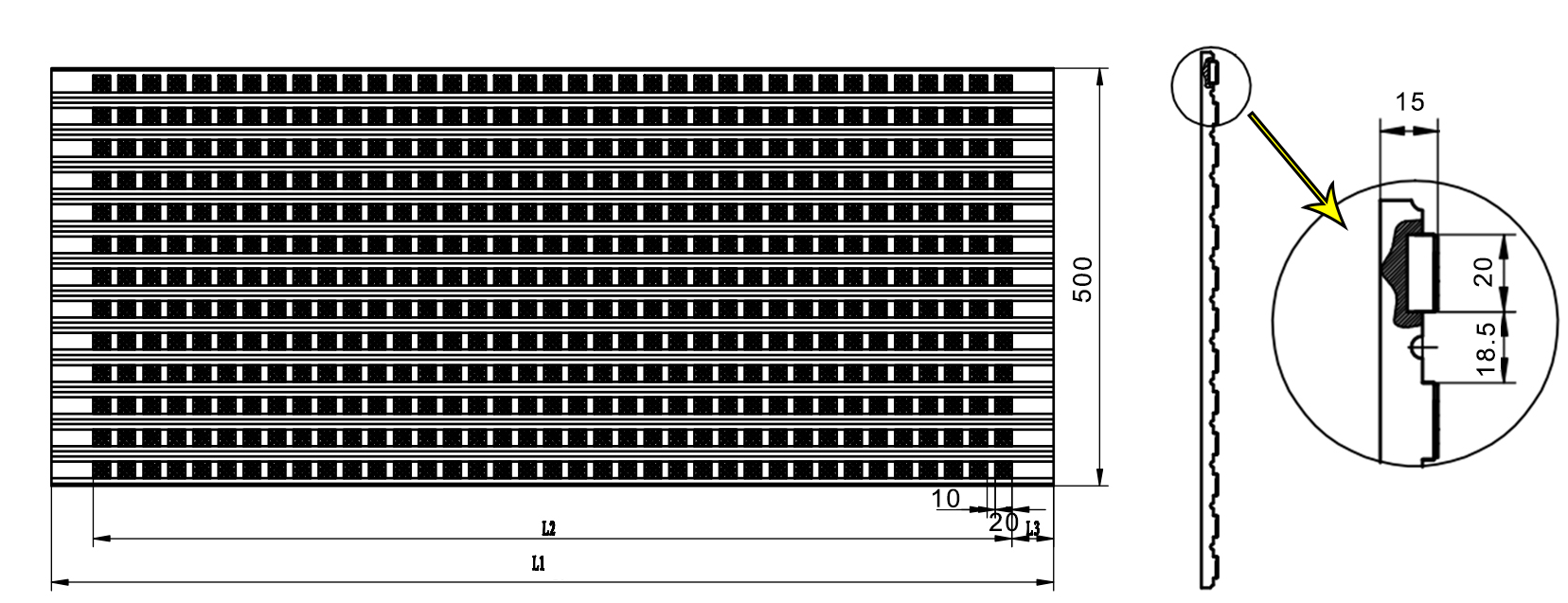
Ventajas del revestimiento cerámico para poleas Aobo
- Se pueden recomendar parámetros de rendimiento según el entorno de su proyecto.
- AOBO puede ofrecer revestimiento cerámico común y revestimiento cerámico ignífugo.
- AOBO can offer different performances of tensile strength in 15- 22MPa, and can recommend you correct one to help you save money
- There are many sizes and widths for you to choose from, helping you avoid product waste and reduce unnecessary capital waste
- AOBO ceramic pulley lagging has a CN bonding layer, the bonding strength is stronger during the construction process, and provides you with detailed construction guidance

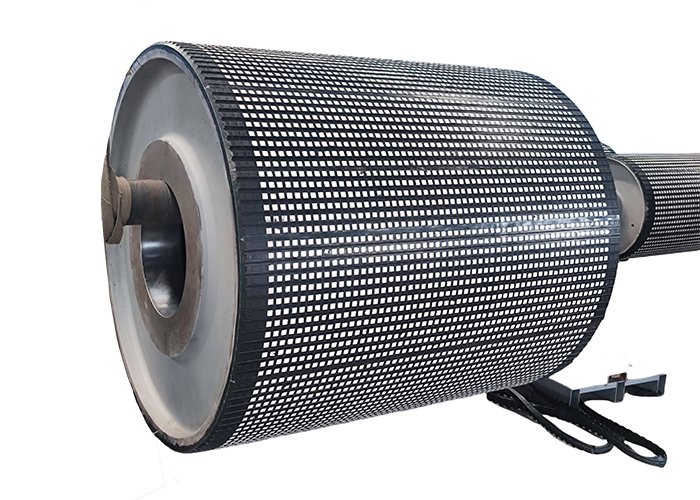
Características del revestimiento cerámico para poleas Aobo
- Fuerte resistencia al desgaste: la resistencia al desgaste y al impacto del revestimiento de polea de cerámica pueden resistir el desgaste, extender la vida útil del tambor y tener un rendimiento estable en condiciones de alta carga.
- Entornos adversos: Adecuado para condiciones extremadamente adversas, como alto desgaste, fácil deslizamiento y materiales o ambientes húmedos. Su buen drenaje, evacuación de lodo y autolimpieza le permiten adherirse y deslizarse eficazmente en entornos húmedos y fangosos.
- Alta resistencia al desgarro: La capa adhesiva semivulcanizada en la parte posterior es fácil de unir firmemente con el adhesivo frío, lo que le da una alta adherencia y evita que se desprenda.
- Alta resistencia a la corrosión química: Los materiales cerámicos son resistentes a altas temperaturas y a la corrosión y pueden adaptarse a duras condiciones de trabajo.
- Fácil construcción: La tecnología de revestimiento de vulcanización en frío se puede construir en el sitio, con una operación simple y sin necesidad de equipos grandes.
The Self-adhesive CN-Layer Functions
Increase the friction coefficient between the pulley and the conveyor belt, thereby reducing the belt slippage and ensuring the stable operation of the conveying system.
Increase the service life: The design of the CN-layer makes the ceramic pulley surface more wear-resistant, thereby extending the service life of the pulley. The life of the ceramic lagging is 3 to 5 times longer than that of ordinary lagging, reducing the frequency and cost of maintenance.
Enhance the cleaning function: The groove design between the self-adhesive layer and the ceramic block can effectively guide the discharge of foreign matter (such as dust and dirt) on the pulley, enhance the self-cleaning ability of the pulley, and is especially suitable for humid working environments.
Convenient construction: Makes the lagging construction more convenient, without the need to disassemble the pulley, which greatly saves time and cost.
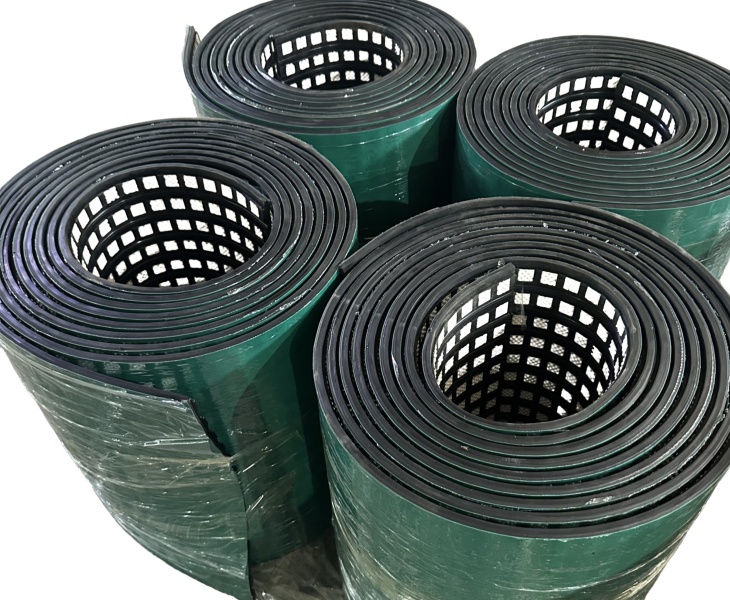

Escenarios de uso ultraflexibles del revestimiento cerámico para poleas Aobo
- Industria siderúrgica: El entorno de producción de acero es caluroso y corrosivo. El revestimiento cerámico para rodillos de AOBO es resistente a altas temperaturas y corrosión, y se adapta a condiciones de trabajo rigurosas.
- Industria energética: El transporte de carbón y otros materiales granulares en centrales eléctricas es propenso al desgaste de los rodillos. El revestimiento cerámico para poleas AOBO ofrece un rendimiento estable en entornos de alta carga y alto desgaste, lo que garantiza el funcionamiento normal del sistema de transporte.
- Industria química: En la producción química, los rodillos a menudo están expuestos a productos químicos corrosivos. El revestimiento de polea de cerámica AOBO tiene una fuerte resistencia a la corrosión y puede proteger la superficie metálica del rodillo de la erosión.
El revestimiento cerámico para poleas Aobo es muy fácil de montar
- Preparación: Revise el estado del rodillo y la lámina de caucho cerámico para garantizar que no presenten daños ni defectos. Prepare herramientas y materiales como cuchillas de caucho, rodillos compactadores, amoladoras, agentes de limpieza, imprimaciones y adhesivos para metal, martillos de caucho, etc.
- Tratamiento de la superficie del tambor: utilice un raspador de goma o una amoladora angular para eliminar el pegamento viejo y las impurezas, luego limpie completamente con un agente de limpieza y muela con una amoladora si es necesario para aumentar la rugosidad de la superficie y mejorar el efecto de unión.
- Aplicación del adhesivo: Primero, aplique uniformemente el agente de tratamiento de metales sobre la superficie del rodillo. Una vez seco, aplique uniformemente el adhesivo preparado sobre la superficie del rodillo y la parte posterior de la lámina de caucho cerámico. El área de aplicación debe ser mayor que el área real del recubrimiento de caucho. Después de 30 minutos, vuelva a aplicar el adhesivo.
- Pegue la lámina de caucho cerámico: pegue la lámina de caucho cerámico de manera plana sobre la superficie del rodillo, intente colocarla en su lugar de una vez, evite la laminación repetida y luego golpéela y enróllela con un martillo de goma o un rodillo de compactación para asegurarse de que no haya burbujas ni arrugas, de modo que encaje firmemente con el rodillo.
- Esperar el curado: el rodillo recubierto de goma debe curarse de forma natural, lo que generalmente demora más de 24 horas.
Si aún no sabe cómo ensamblarlo, no se preocupe, AOBO puede brindarle orientación técnica.
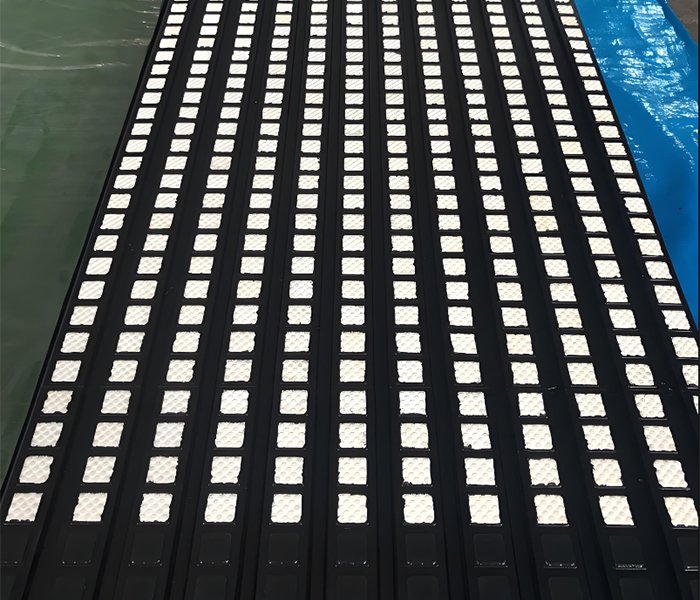
The hardness of ceramic sheets is 3 times that of ordinary steel, and the wear rate is very low.
The lifespan can reach 5-10 times that of ordinary rubber pulley lagging, and it is usually used for 3-8 years in scenarios such as iron ore and quartz sand.
Los productos de nuestra empresa incorporan cerámica en caucho, que es muy resistente y duradero.
Using the embedded vulcanization process, the bonding strength between the ceramic sheet and the rubber substrate is ≥20MPa;
The surface of the ceramic sheet is pre-engraved with micro-grains to enhance the mechanical bite force and ensure that there is no hollowing.
Cold bonding is not recommended!
Ceramic pulley lagging must be hot-vulcanized to ensure a firm bond between the ceramic sheet and the rubber.
Pre-vulcanized ceramic lagging plates can be provided for on-site drum repair (special glue is required).
Regularly use a high-pressure water gun to remove the accumulated material in the gap between the ceramic sheets.
Avoid scratching with metal tools to prevent the ceramic sheet from breaking the edge.

